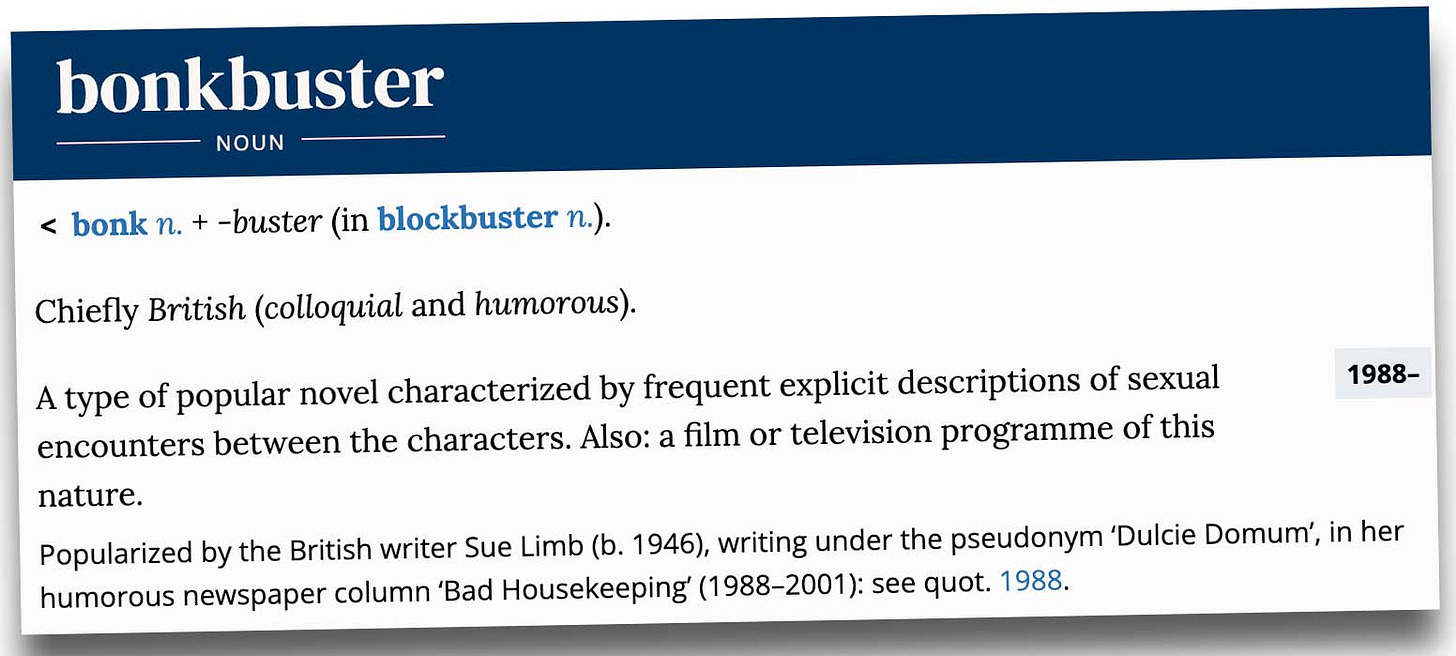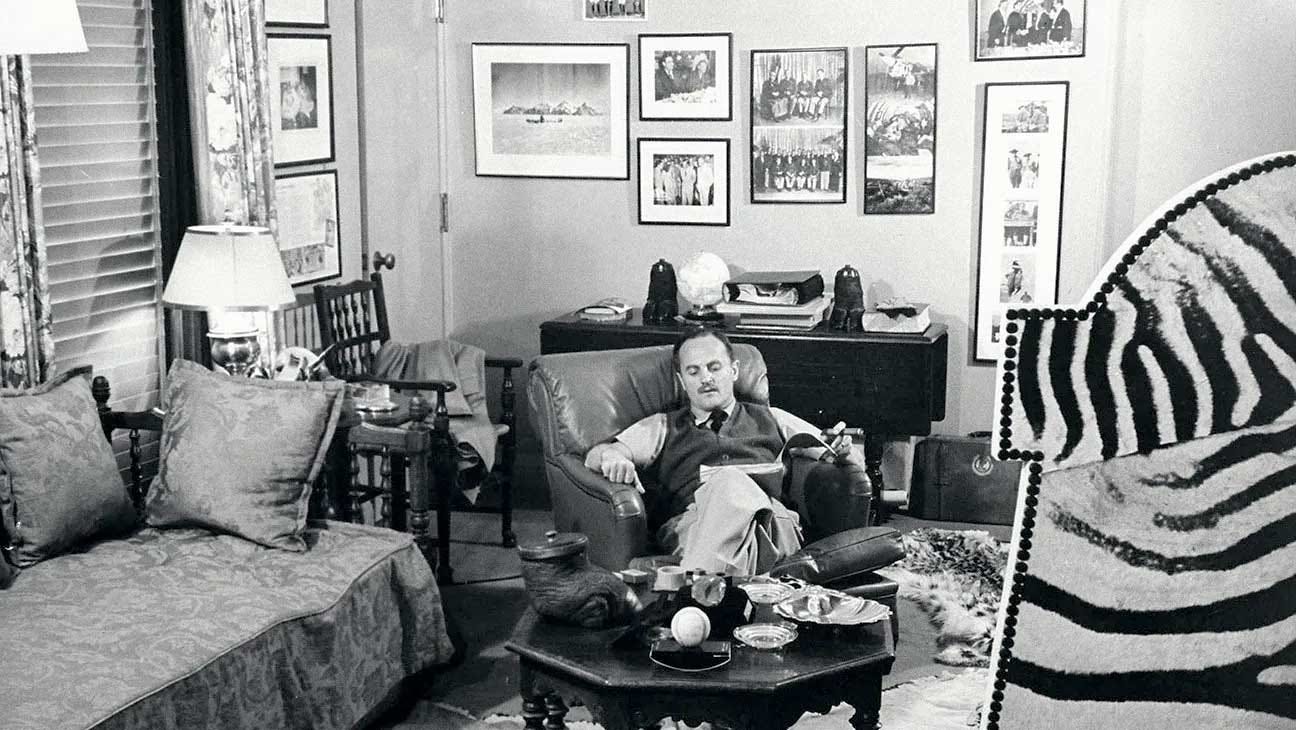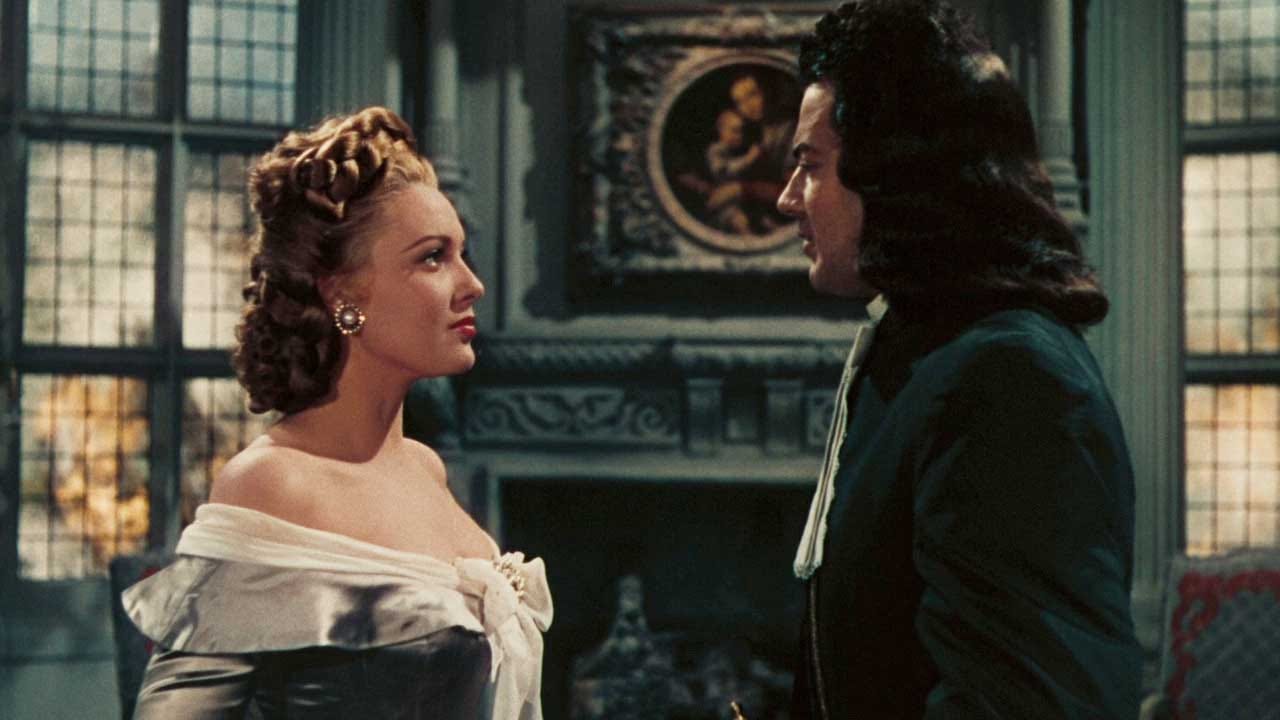Gross is every year’s top-grossing movie, since 1913, reviewed.
FOREVER AMBER, Director OTTO PREMINGER, Cast LINDA DARNELL,
CORNEL WILDE, production company 20th CENTURY FOX, 1947, 138 MINUTES.
This film is a piece of work. A piece of work based on a piece of work. A hit movie made from a book that was so sensational it was banned across America. The story of the creation and the publication and then the after-life of Forever Amber ought to be a movie - or a hit podcast (in fact, hold on while I write a proposal for a hit podcast). I really don’t have space to tell you the whole story here but it’s a ride.
When she began writing Forever Amber - at the age of 19 - Kathleen Winsor couldn’t possibly have known it would become the biggest book of the decade in the US and a worldwide bestseller translated into dozens of languages. It was notorious even before publication (nice work from the Macmillan publicity department there, hoping for a repeat of their 1936 smash Gone with the Wind) and it was quickly banned in multiple US states, including Massachusets. State Attorney General George Rowell stated the novel had “70 references to sexual intercourse; 30 illegitimate pregnancies; seven abortions; ten descriptions of women dressing, undressing, or bathing in the presence of gentlemen; five references to incest; 13 references ridiculing marriage; and 49 miscellaneous objectionable passages.”
Winsor was 25 on the day of publication, in 1944. She was an absolute unknown. A suburban nobody who said she had a lot of spare time on her hands while her husband was serving in the Marines (she dedicated the book to him). But she was a phenomenon - a prodigy, evidently a fully-formed pop-literary genius - and she was about to become very, very rich. Remarkably, she received a $50,000 advance ($1.5M in today’s money) from Macmillan for her first book and would earn much more.
Forever Amber is a breezy historical romance - a romp - packed with implausible incident, but it’s also - thirty years ahead of its time - a bona fide bonkbuster. The book’s heroine, Amber St. Clare, a girl brought up in a humble (and terribly up-tight) Puritan family in the English countryside, runs away to London to seek her fortune among the glamorous royalist elite (huge feathered hats, ruffs, brocades, nightly balls…) and then sleeps her way around the aristocracy until she reaches King Charles II (“I’m somebody now! I’ve lain with the King!”). She’s essentially a character from a Judith Krantz novel abroad in Restoration London. She knows what she wants and she sets out to get it. She’s not looking for wedded bliss. She’s looking for power, status and money. She has agency, self-confidence and balls.
Sanitising a romance
So, in the movie adaptation the sex is gone (but not the agency and the self-confidence and the balls). Darryl F. Zanuck, Head of Production at 20th Century Fox and his hugely experienced writers Philip Dunne and Ring Lardner realised that in filming such a wildly controversial book they’d be under intense scrutiny and might never get the thing done if they tried anything even slightly transgressive.
Bonkbuster is a word coined by a British writer - it applies mainly to the glossy airport novels of the 1970s - romances in which independent, sexually-confident women pursue love and pleasure but not monogomy. This paper by Amy Burge, Jodi McAlister and Charlotte Ireland is fascinating and what’s remarkable about Winsor’s novel is how closely it fits their definition of a bonkbuster - a genre that would not exist for forty years after she wrote it.
In Forever Amber there’s plenty of kissing but not a single disordered bed, not a trace of a seduction. We are asked to assume, on the basis of the thinnest possible evidence, and in a 100% Hays-compliant way, that Amber has slept with this long line of aristocrats of steadily increasing rank. 20th Century Fox had secretly optioned the book within weeks of publication but by then the Hays Office - which regulated films, remember, not books - had already expressed an opinion. They’d seen the book while it was still in galleys and essentially warned the studios off (imagine the British Board of Film Classification obtaining a draft of the latest infamous shopping and fucking novel and putting out a general “don’t even think about it” to filmmakers).
Zanuck badly wanted his Gone with the Wind, though. He’d offered $35,000 for the Margaret Mitchell novel ten years earlier but Selznick had beaten him with a bid of $50,000. Zanuck wasn’t going to lose this time and committed $125,000 (a sum that would rise to $200,000 if the book became a best-seller, which it quickly did) for an option to film Forever Amber. It was the perfect candidate: an ambitious narrative with sex and sword fights and the sweep of history. Aspects of Forever Amber are uncannily (but not surprisingly) like Gone with the Wind. Carriages race against Technicolor sunsets, flintlocks are fired as if they were Colt 45s, there’s a huge and consequential fire (and not just any fire - it’s the Great Fire of London). The aftermath of the collapse of Cromwell’s Commonwealth and the reassertion of absolute monarchy is here a chaotic, liberatory backdrop to the story as the end of the American Civil War was to Gone with the Wind.
The Musk of his era
Nothing would stop Zanuck. Every sane person in his life advised against it. He was trying to make a film from an impossible source. It would ruin him and the studio. It would be banned and he’d be shunned… But he pushed on. Like I said, it’s an amazing story (wait for that podcast). Casting was a nightmare, finding a director was a nightmare, getting a viable script from such difficult material was a nightmare. But eventually it came together. Preminger, a clever and versatile director, hated the book and later claimed that his contract with the studio obliged him to direct.
Everything was done to build the hype. Casting was done with maximum publicity and when Linda Darnell finally got the role - replacing a newcomer who turned out to be too inexperienced to carry off the later parts of the story in which Amber is a mature operator of 25 - she was given the full Vivien Leigh treatment. No expense was spared in translating her from mid-ranking star to tier-one Goddess (ultimately and tragically Darnell’s upgrade was short-lived. The usual mixture of naivety, booze and studio duplicity brought her low).
History as character
Forever Amber is a very Hollywood historical drama. Much about this version of 17th Century England is ridiculous, hilarious even. Darnell’s hair and wardrobe is a perfect 1940s confection throughout - Monsieur Louis, a flamboyantly Hollywood hairdresser, prepares Amber for a ball as if for Frank Sinatra at Ciro’s. In smelly, plague-era London, huge, airy salons are furnished like ranch-style houses in the Hollywood Hills. Passions smoulder, breasts heave, eyes telegraph longing. This is a Hollywood melodrama time-shifted three hundred years.
Linda Darnell did not escape the indignity of an appearance in Kenneth Anger’s Hollywood Babylon. There’s an awful photograph of the living room in which she burnt to death in the second volume. She’d been out of the movies for some years by then but was still only 41. After Forever Amber she made three other films with Preminger, all now on my watch list.
No historical drama can ever be true or even particularly faithful to the period described. Shakespeare’s Roman plays, even the history plays. are all wrong in almost every important respect. History as poorly-recalled family drama. History as allegory. History as costume romp. Forever Amber cares not for verisimilitude. Nor for sociological truth. Amber is in every sense a startlingly modern woman, a bourgeois subject seeking prestige and pleasure and wealth in a fully Jackie Collins/Dale Carnegie way. She’s surrounded by men and women of the same character. Individualists in the 20th-Century American mould. God is absent - and the Puritans, his only representative in this story, are constantly mocked and derided. Amber’s individuality, her subjectivity - are thoroughly modern. And we enjoy this.
Capital intrudes
What have I told you about Hollywood and capitalism? My chronological journey has confirmed capitalism is not incidental to this system. It’s an active principle, a structural element in the form as well as in the production economics. Hollywood movies don’t represent capital or describe it, they promote it.
In Forever Amber, there’s an extraordinarily direct example - like something from an educational movie about the origins of mercantile capitalism and empire. One of the many ghastly opportunists Amber meets along the way learns she’s come into some money. He lifts the whole £200, promising to invest it: “Sew pennies and reap pounds…” Naive Amber, still a teenager at this point - brand new in London - doesn’t understand. Our opportunist explains: “Money begets money, my dear. Now, this is an age of expansion. Under the guidance of our wise and far-seeing King, English capital has reached out to other lands and other climes, to the colonies, the Indies, to Hudson Bay…”
Love is present too, of course, alongside the money, but it’s love of the modern variety - the bourgeois, secular variety. Amber and her very modern early-modern lovers enjoy ‘spending time together’ in an uncomplicated way, untroubled by guilt or the sanction of church or convention - what Erica Jong would call a ‘zipless fuck’ in her second-wave feminist bonkbuster Fear of Flying almost thirty years later. Amber is really, enduringly ‘in love’ with Bruce Carlton, the man who rescued her from her grim Puritan fate while she was still a teenager - and with whom she has little Bruce Jr - but ‘loves’ other men along the way in an essentially Carrie Bradshaw way (Cornel Wilde’s Bruce is her Big). This is a historical drama conformed to the conventions of the late 20th-Century romance. Amber shops for clothes and has her hair and make-up done in the manner of a nineties ladette prepping for a bender. Her first night out with Bruce Carlton is recognisably a date - drinks, dinner, a play, a walk by the river. There is pre-loading - chink - and a fair amount of actual binge-drinking. Amber’s style is leading-edge and she talks like an influencer about her gorgeous clothes and “how they make me feel.”
Like so many Hollywood movies of this period, Forever Amber is a story about class and social mobility. Amber sets out to ascend through the class system - from the gloomy Puritan farmhouse of her childhood to the sunlit lawns and palaces of the very top of English society. As she sets out on her journey she’s warned: “But sweetheart, you can’t just climb from one class to another, as though they were rungs on a ladder.” “What’s to stop me. I know what sort of world this is” - her reply bounces around between the world she inhabits - in which the hierarchy of absolute monarchy is reasserting itself after the Parliamentary interlude - and the world her audience inhabits - in which hierarchies are coming apart after a catastrophic war.
Darnell’s performance is impeccable. She brings petulance, defiance, independence, self-knowledge. And we understand the difficulty and boldness of this production - in Forever Amber the female lead is allowed a degree of freedom that would be essentially impossible in a story set in the 1940s. There’s a Hays-approved punishment, of course - first love Bruce goes off to the colonies with Bruce Jr. - but Amber survives and thrives. Imagine Stanwyck living her later life happily and independently in Stella Dallas, or throwing an overnight bag into the trunk and driving off into the sunset in Double Indemnity.
Forever Amber is a great movie, at least an important one. Or anyway a big one. It’s immensely satisfying, also silly, with two or three lovely performances that will make you chortle (in addition to Darnell, there’s George Sanders, as Charles II, who manages to retain a fully Shakespearean dignity while prancing around in lavender satin with the many tiny spaniels he calls his children). But, after this movie, as we approach the 1950s, we’re getting into a sequence of big releases that really aren’t great movies at all. I’m dreading reviewing the next dozen or so films (we’re entering what Quentin Tarantino says was the Hollywood low-point). Things won’t really look up till the stirrings of the New Hollywood in the mid-sixties.
Winsor herself thought her book wasn’t particularly sensational, in fact: “I wrote only two sexy passages, and my publishers took both of them out. They put in ellipses instead. In those days, you could solve everything with an ellipse.”
There’s the small problem of watching the movie. There’s a horrible, murky rip on YouTube and it’s not on any of the streamers. In the end I bought a French Blu-Ray.
Gary Smith’s splendid Forever Amber: From Novel to Film is my source for a lot of the production history. It’s a great read. There’s only one biography of Linda Darnell, by all accounts a good one. There are many books about Preminger, including this autobiography with a photograph of the back of his huge, bald head on the cover.










